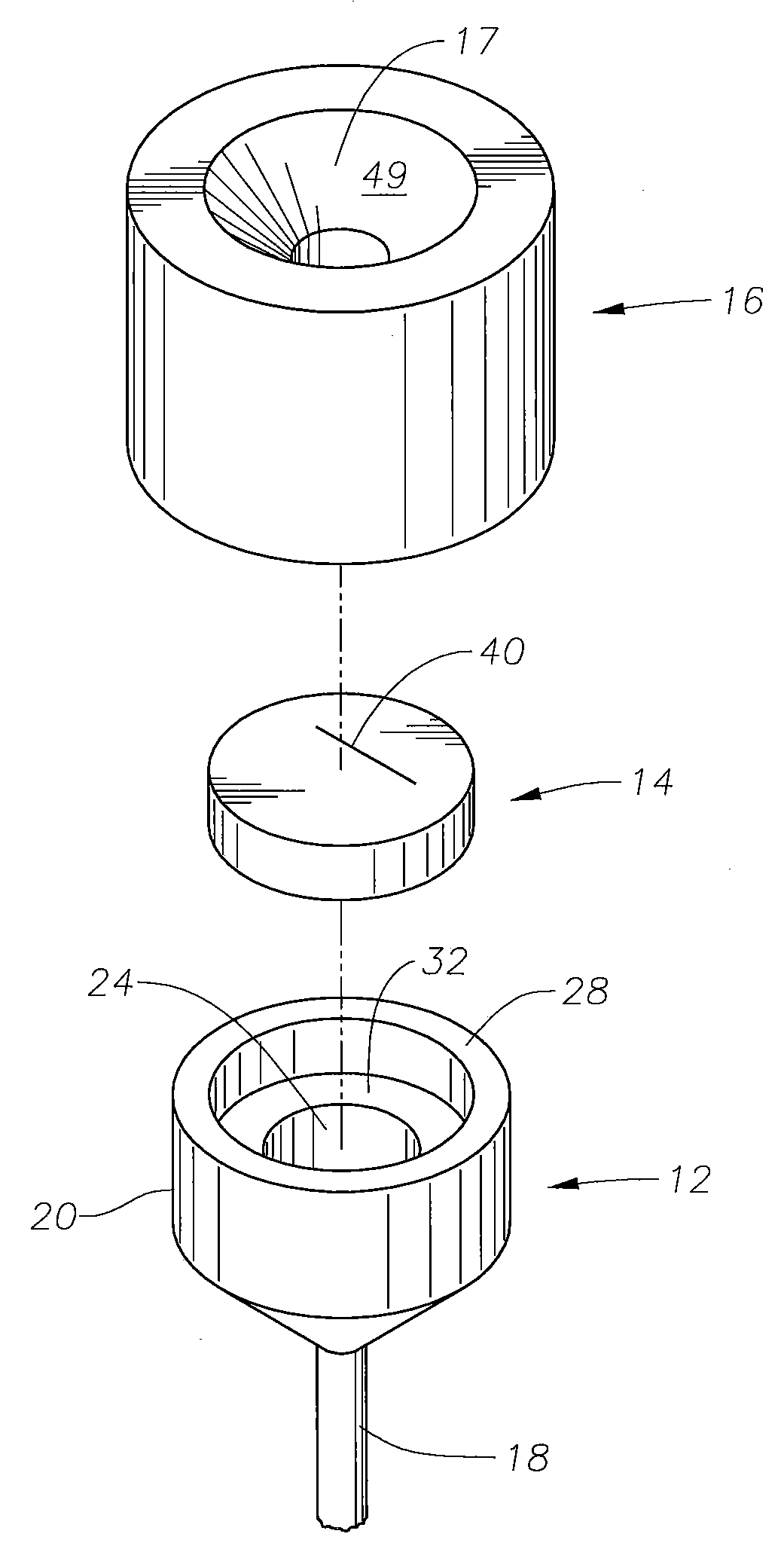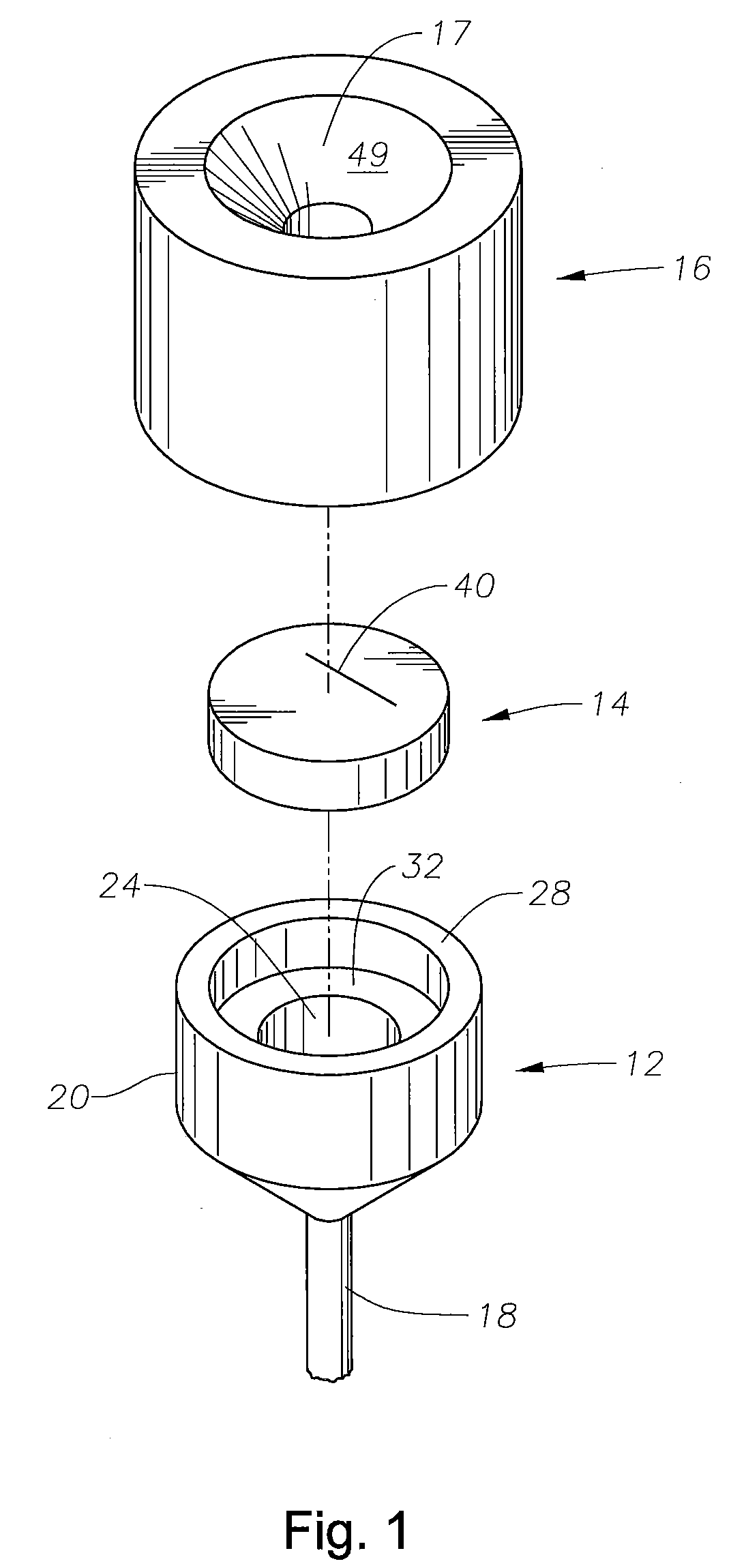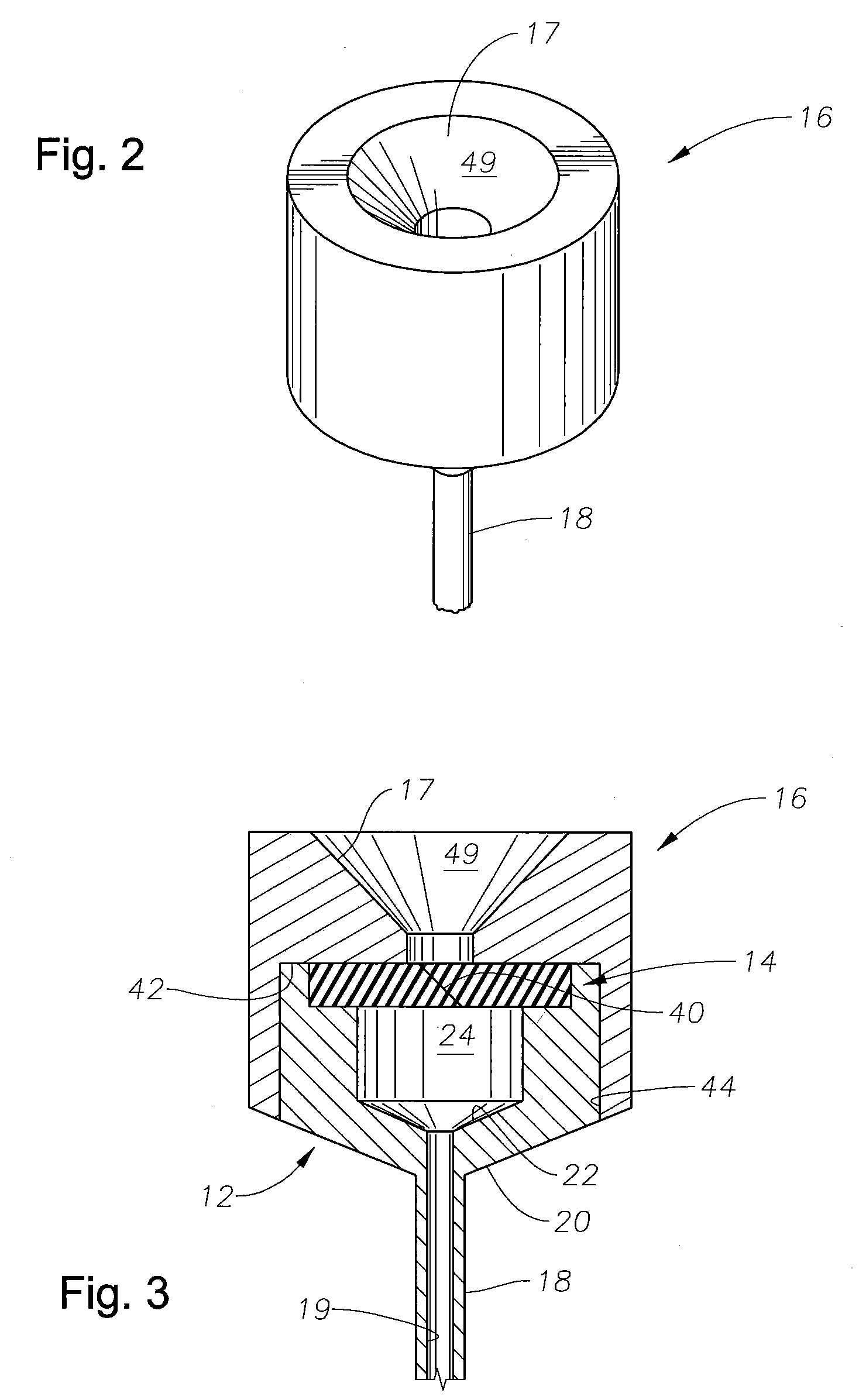Self Sealing Cannula / Aperture Closure Cannula
a cannula and aperture technology, applied in the field of self sealing cannula/aperture closure cannula, can solve the problems of inability to control the loss of intraocular pressure during instrument exchange or removal, the height of the projection on the eye surface, and the trauma of the eye at the incision si
- Summary
- Abstract
- Description
- Claims
- Application Information
AI Technical Summary
Benefits of technology
Problems solved by technology
Method used
Image
Examples
Embodiment Construction
[0017]As best seen in FIGS. 1 through 4, cannula 10 generally consists of body 12, sealing disc 14, and cap 16. Body 12 and cap 16 may be made from any suitable material, such as stainless steel, titanium, or thermoplastic. Body 12 is comprised of tube 18 and hub 20 which may be formed integrally or in separate pieces. Tube 18 is of sufficient length to extend through sclera 130 and enter posterior chamber 140. Hub 20 is generally cylindrical with internal cavity 24 having distal floor 22 sloped or tapered at an angle of between about 18-24 degrees (most preferably about 22 degrees) so as to have a funnel shape directed toward bore 19 in tube 18. Cavity 24 may have a diameter of between about 0.040-0.050 inches (most preferably about 0.046 inches) or any other suitable diameter. Cavity 24 generally extends from proximal face 28 to distal floor 22 a depth of between about 0.025-0.035 inches (most preferably about 0.029 inches). Proximal face 28 of hub 20 is generally flat with circum...
PUM
 Login to View More
Login to View More Abstract
Description
Claims
Application Information
 Login to View More
Login to View More - R&D
- Intellectual Property
- Life Sciences
- Materials
- Tech Scout
- Unparalleled Data Quality
- Higher Quality Content
- 60% Fewer Hallucinations
Browse by: Latest US Patents, China's latest patents, Technical Efficacy Thesaurus, Application Domain, Technology Topic, Popular Technical Reports.
© 2025 PatSnap. All rights reserved.Legal|Privacy policy|Modern Slavery Act Transparency Statement|Sitemap|About US| Contact US: help@patsnap.com



